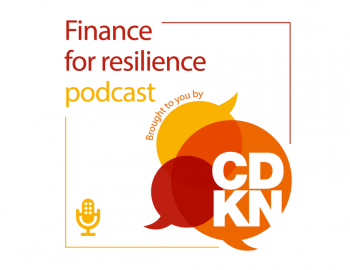GUIDE: New markets for green bonds
GUIDE: New markets for green bonds
CDKN is pleased to launch its latest publication on climate finance: New markets for green bonds: A guide to understanding the building blocks and enablers of a green bond market, by Jon Williams, Andy Jones and Sarah Pickin, PwC UK.
This guide has been developed in response to the interest of developing markets in the potential for capital markets to connect institutional private capital with projects that deliver positive environmental impact. Green bonds are a vehicle for doing this.
The guide has been written for those with responsibility and interest in achieving environmental goals and commitments, in particular green growth and infrastructure development. It may be particularly useful for environment, finance and planning ministries and related teams in regions and cities.
The guide draws on learning from CDKN’s project to assess the potential for a successful green bond market in Colombia, and its broader climate finance work in other developing and emerging markets.
It discusses the key building blocks and enablers for a green bond market -- and some of the issues and steps relate to wider capital market development. The guide reflects on what green bond markets need for success, and offers explanation of the key elements required to build them. At the end of each section, a series of questions is asked for your market and, depending on current market attributes and challenges, suggestions are given for the next steps.
The guide covers five building blocks:
- the enabling environment (including policies, regulation, taxes, and market infrastructure and institutions)
- investors
- issuers and project pipeline
- governance
- definitions and standards.
What is the demand?
The Business and Sustainable Development Commission describes at least US$12 trillion in market opportunities for business from sustainable business models. The United Nations estimates an annual funding gap of $2.5 trillion is needed for the achievement of the Sustainable Development Goals (SDGs), and within this, US$1 trillion is needed annually for clean energy alone. A large number and broad range of projects and assets that contribute to achieving the 17 SDGs need this funding for their development and operation.
One of the SDGs where ‘green finance’ has been successfully mobilised is on clean energy and climate action. The Paris Agreement on climate change entered into force in November 2016, after 196 countries committed to reducing greenhouse gas emissions. Significant quantities of finance are now needed to convert country commitments (Nationally Determined Contributions) into action - and a low-carbon, climate-resilient economy.
Despite recent increases in volumes of climate finance, a significant funding gap will arise unless new sources and channels of finance are mobilised. Public sector balance sheets do not have the capacity to fund the amounts needed, and so an estimated 80–90% of funding will need to come from the private sector. Bank balance sheets can take only a proportion of the private finance needed so the capital markets have to be leveraged, along with other sources such as insurance and peer-to-peer.
On the investor side the demand for green bonds has grown quickly with asset owners and managers diversifying their investment portfolios and seeking positive impact beyond financial return. In the light of the global commitment to shift to a green and low-carbon economy, the green bond market has the potential to grow substantially, while attracting more diverse issuers and investors.


